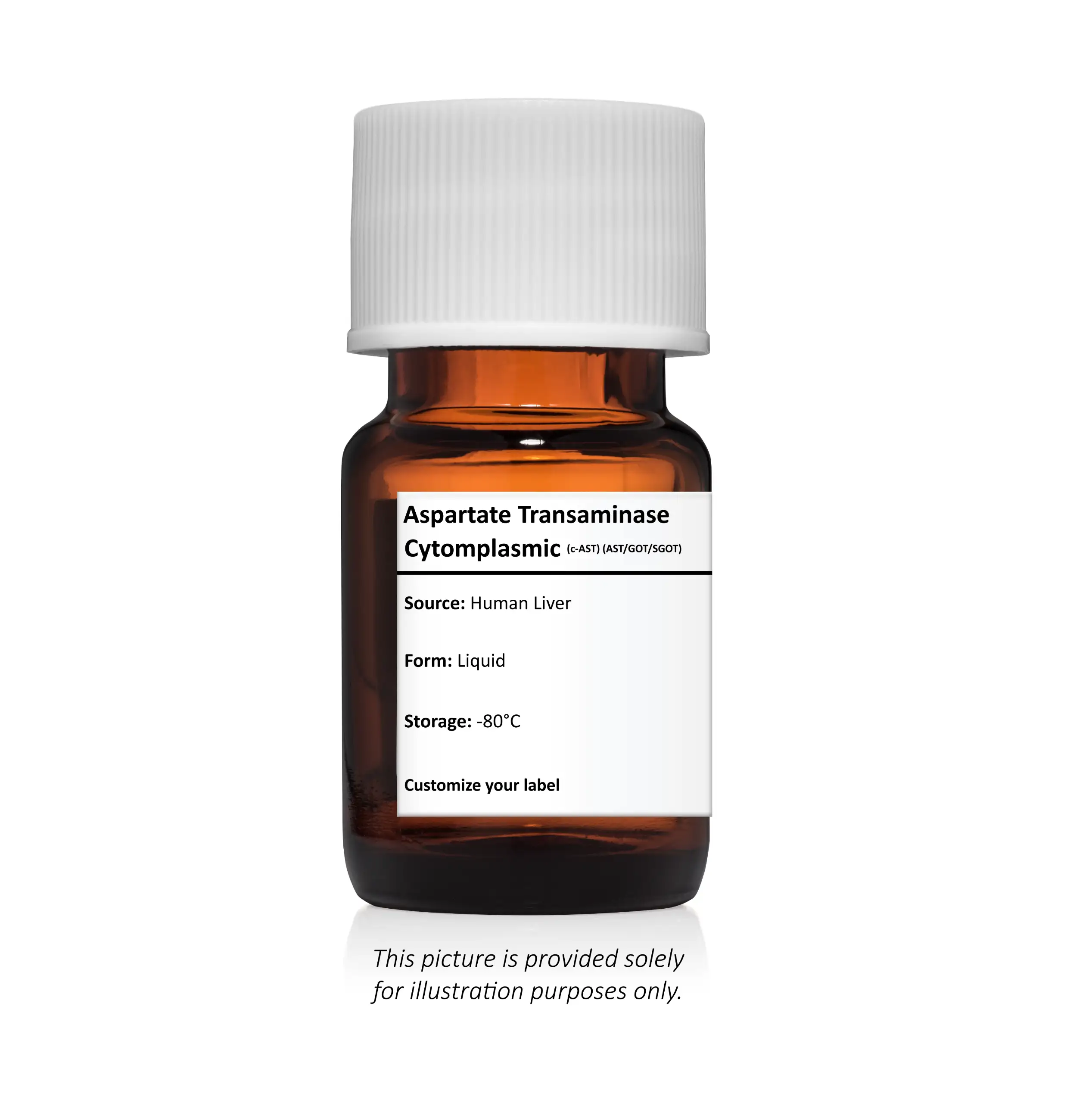Aspartate Transaminase Cytoplasmic (c-AST) (AST/GOT/SGOT)
Aspartate Transaminase (AST) is a member of the aminotransferase family and catalyzes the reversible transfer of the amino group from glutamate to oxaloacetate while replacing the amino group of glutamate with a carbonyl group.
| Product Specifications | |
|---|---|
| Source | Human liver |
| Form | Liquid |
| Purity | Partially Purified |
| Storage | -80°C |

The reaction catalyzed by AST requires the cofactor known as pyridoxal-5-phosphate (P5P). It binds covalently, but reversibly to an active-site lysine. This helps catalyze the reaction by accepting the amino group from the amino acid then transferring it to the carbonyl compound. Any sample, whether serum or purified extract, to which P5P is added may show a marked increase in AST activity if some or all of the enzyme does not already have the cofactor bound to it.
Under normal conditions AST is found in most tissues and fluids of the body except urine. However, unlike ALT, it can be found at comparable significance in the heart, kidneys, pancreas and skeletal muscle. Consequently, elevated levels of serum AST can be caused by pathologies of many different organs. However, it is still considered to be predominantly a marker of liver function. An additional feature of AST is that there is both a cytoplasmic isoenzyme as well as a mitochondria’ isoenzyme. Although it is generally true that the cytoplasmic form of AST is the predominant one in serum, mitochondrial AST can be elevated and sometimes higher than the cytoplasmic form and this information can be diagnostically useful.
